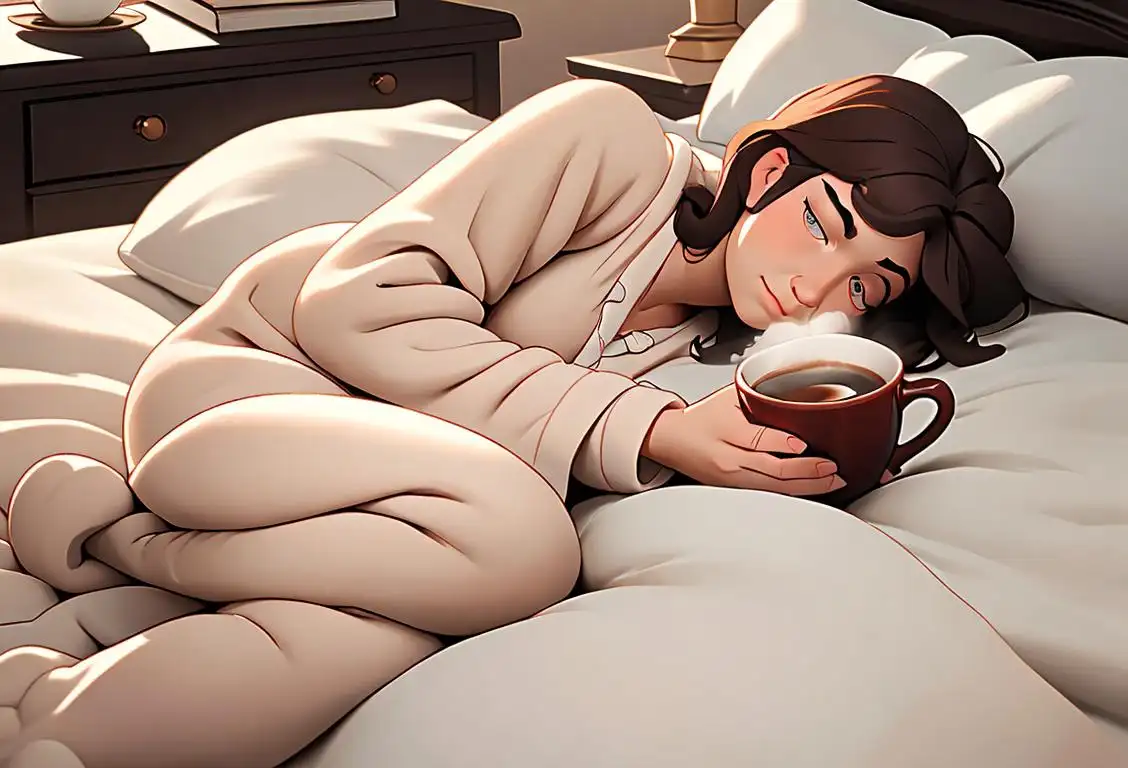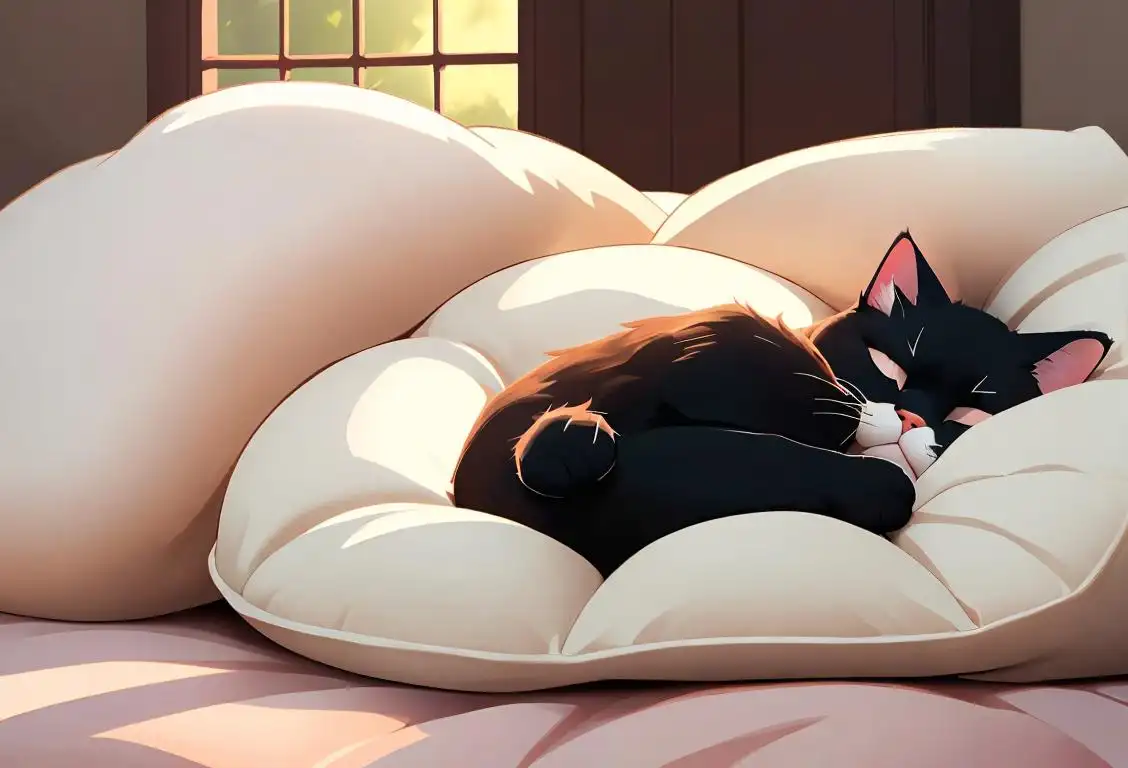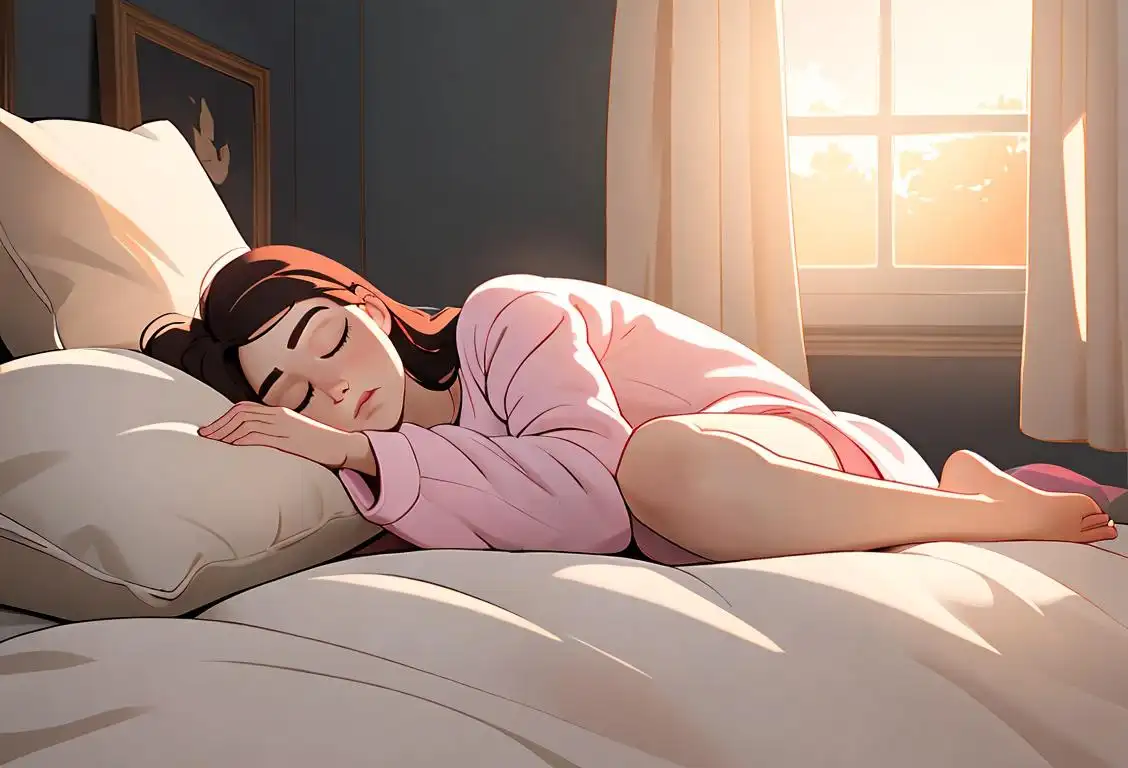National Stay In Bed Day

Get your coziest blanket and a pillow just right because it's National Stay in Bed Day! This dozy day sweeps the internet once a year, and if you missed it this time, there's always the next. A completely original excuse to enjoy Sunday's unruly twin on any other day of the week.
When is Stay In Bed Day?
It's national stay in bed day on the 20th November.
When Does National Stay in Bed Day Fall?
According to the metadata from WhatNationalDayIsIt.com, National Stay in Bed Day was mentioned a whopping 778 times online. Grabbing the most attention on November 20, 2016, it's a day where the comfort of your bed is celebrated and thoroughly appreciated.
Snuggling in the Internet History
Delving into the online history of National Stay in Bed Day, it seems to be a cuddly phenomenon that united the internet in a massive, world-wide sleep-in in 2016. Despite a little ambiguity surrounding the exact origins of this comforting day, the day has become an online mainstay.
Why Stay in Bed?
We've all had those mornings where the allure of the warm bed is just too strong to ignore. On National Stay in Bed Day, snuggling becomes a duty, and we're allowed, even encouraged, to indulge in the soft warmth of our quilts. It's a day designed for rest, leisure, and reconnecting with the sacred art of doing absolutely nothing. A perfect chance to catch up on sleep, dive into a captivating book, or enjoy breakfast without leaving your comfortable cocoon.
How to Celebrate?
On National Stay in Bed Day, celebration equals relaxation. Stay in bed all day while exploring the realms of binge-watching your favorite shows, studying cloud formations out of your window, or enjoying your cup of traditional coffee or adventurous matcha in bed. You are limited only by your ability to nestle up and get comfortable.
History behind the term 'Stay In Bed'
1883
The Creation of the Modern Bed
In 1883, the invention of the coil spring mattress revolutionized the way people slept. This new type of mattress provided unprecedented comfort and support, making it much more enticing to stay in bed rather than getting up.
1936
The Introduction of Labor Laws
Labor laws began to emerge in the early 20th century, emphasizing the importance of rest and leisure for workers. The maximum working hours were limited, and with more time available for relaxation, people started to view staying in bed as a well-deserved break from the demands of their jobs.
1950
The Rise of Television
Television became a household staple in the 1950s, and it quickly became a popular form of entertainment. Many people found themselves staying in bed longer to watch their favorite shows and movies, leading to the association between staying in bed and leisurely activities.
1970
The Counterculture Movement
The counterculture movement of the 1960s and 1970s placed a significant emphasis on personal freedom and rejecting traditional norms. Staying in bed became a symbol of non-conformity and rebellion against the rigid expectations of society.
1990
The Accessibility of Technology
With the rise of personal computers and the internet, technology became increasingly accessible to the general population. This meant that people could stay connected, work, and entertain themselves without leaving the comfort of their beds. Staying in bed became a lifestyle choice facilitated by technology.
2005
The Holistic Wellness Movement
In the 21st century, there has been a growing emphasis on self-care and holistic wellness. As part of this movement, people recognize the importance of adequate rest and rejuvenation. Staying in bed has become synonymous with self-care practices and taking time to prioritize one's mental and physical well-being.
Did you know?
Did you know that National Stay In Bed Day actually has a noble cause too? Some people also use this day to raise awareness for chronic illnesses that often forces individuals to stay in bed. Now, that's a way to make snoozes count!Tagged
fun relaxation breakfast in bed stay at home sleepFirst identified
7th April 2015Most mentioned on
20th November 2016Total mentions
778Other days
Stay In Bed Day
Napping Napping Day
Dre Day
Sleep In Day
Bubble Bath Day
Drop Everything And Read Day
Eat Outside Day
No Housework Day
Slow Down Day
No Children Day







